Truth and Reconciliation in Canada

What is Truth and Reconciliation?
- Truth and Reconciliation is about the tragic history of Canada's residential schools and the ongoing efforts to use education and discussion to move toward reconciliation between Indigenous and non-Indigenous people in Canada.
- Reconciliation cannot happen without acknowledging the truth.
- An integral part of working towards truth and reconciliation was the creation of the Truth and Reconciliation Commission (TRC (external link) ). It involved listening to the survivors, their families, communities and others affected by the residential school system and educating Canadians about their experiences. The National Centre for Truth and Reconciliation (external link) was established as part of the TRC’s mandate. It facilitates archives and collections for ongoing research and examination, to protect and preserve statements, documents and other materials with the goal of fostering reconciliation and healing.
- Both South Africa and Canada have histories of colonization including the appropriation of land, the displacement of peoples, genocide and cultural genocide. In order to acknowledge the past injustices that affect Indigenous people today in each country, the South African Truth and Reconciliation Commission (1994-98) and Canadian Truth and Reconciliation Commission (2008-2015) (external link) were implemented. Now more than 20 years behind us, Canadians have been able to refer to the South African TRC to learn from its legacy.
Different perspectives on Truth and Reconciliation
The Honourable Murray Sinclair (former senator and chair of the Truth and Reconciliation Commission): “The mandate is in the name, Truth and Reconciliation and there are components to that that we all need to try to bring forward to the public. The truth component is to essentially discover what really went on in residential schools, and to do that we document the experiences and stories of the survivors… In addition to that we have a process of reconciliation… this process involves educating the public about residential schools and asking the public to accept that there are more things that need to be done.”
Watch Honourable Murray Sinclair’s appearance on The Agenda where he discusses the importance of Truth and Reconciliation (external link) .
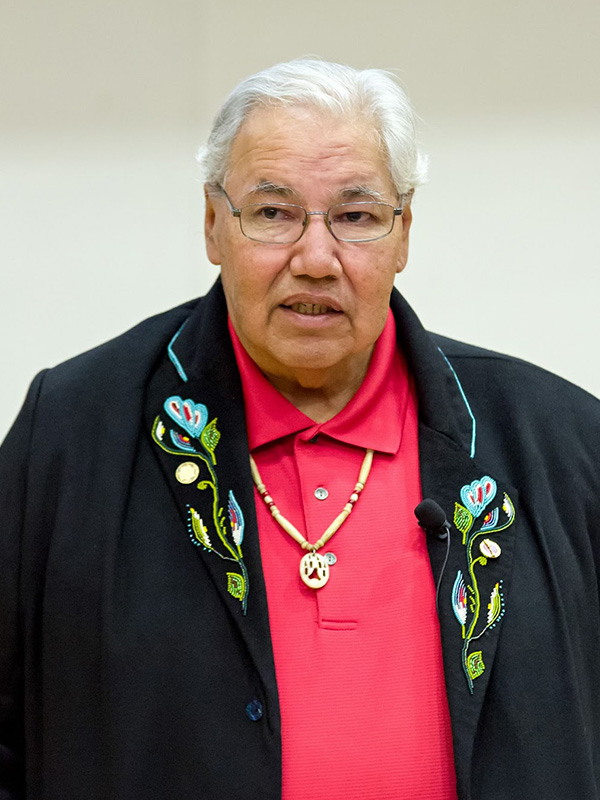

Dr. Pamela Palmater (Mi'kmaq lawyer, professor, activist and politician): “Reconciliation is (1) part apology with recognition of what wrongs were done, and that someone was harmed, (2) part listening to a person explain what harm was done (truth), (3) part promising never to do it again, with awareness of harm caused (education), and (4) part making reparation (justice).”
Watch Dr. Palmater’s presentation, 'Truth and Reconciliation in Canada: If It Feels Good, It's Not Reconciliation' (external link) at the 2018 Woodrow Lloyd Lecture at the University of Regina.
Definitions and key concepts
- The Indian Act was introduced in 1876, giving the Canadian government control over almost every aspect of the Indigenous Peoples’ lives, including attending residential schools.
- The Canadian government also determined criteria for who does and does not count as “Indian.” Status was revoked if individuals participated in activities such as voting, serving in the military, or pursuing post-secondary education.
- Women who married non-status men lost their status, as did their children, until 1985 when an amendment (Bill C31) was made to the Indian Act.
- 150,000 First Nations, Inuit and Métis children were forcibly removed from their homes to attend government-funded schools far away from their communities that were operated by certain churches and religious organizations (external link) after 1880.
- The goal of residential schools was to assimilate the children into Euro-Canadian society and “take the Indian out of the child.” Children were punished for speaking their Indigenous language and for engaging in traditional music and dance, and siblings were purposefully kept apart.
- Children were forced to practice Christianity and participate in Canadian society after a process of cultural, social, educational, economic and political assimilation.
- Students faced starvation, neglect, and physical, emotional and sexual abuse. The cramped conditions of underfunded and overcrowded schools were known to spread Tuberculosis, causing many deaths.
- Although it is known that the overall number is significantly higher, it is currently estimated that at least (PDF file) 6,000 children (external link) died while attending residential schools. School officials often refused to send deceased children’s bodies to their parents, claiming the cost was too high.
- There was a 40-60% mortality rate (external link) in Indian residential schools.
- Multiple bodies were buried together, creating mass graves.
- The last school closed in 1996.
- The residential schools were a genocidal process that has caused intergenerational harms with impacts that still carry on.
- The Truth and Reconciliation Commission of Canada (TRC) (external link) was created as a result of the Indian Residential Schools Settlement Agreement, the largest class-action settlement in Canadian history.
- It involves (PDF file) 94 calls to action (external link) to redress the legacy of residential schools and advance the process of Canadian reconciliation.
- The TRC provided members of the Indigenous community who have been affected by the legacy of the Indian residential schools system (directly or indirectly) with an opportunity to share their lived experiences.
Anti-Indigenous racism (external link) is the ongoing race-based discrimination, negative stereotyping and injustice experienced by Indigenous Peoples within Canada. It includes ideas and practices that establish, maintain and perpetuate power imbalances, systemic barriers and inequitable outcomes that stem from the legacy of colonial policies and practices in Canada.
(PDF file) Colonization (external link) refers to the processes by which Indigenous Peoples were dispossessed of their lands and resources, subjected to external control, targeted for assimilation and, in some cases, extermination. These processes were for the benefit of settlers.
- The human rights crisis of missing and murdered Indigenous women is a result of acts of genocide against Indigenous women, girls and 2SLGBTQ people in Canada. This genocide has been empowered by colonial structures including the Indian Act, the Sixties Scoop and residential schools, and have resulted in increased rates of violence, death and suicide in Indigenous populations.
- The National Inquiry into Missing and Murdered Indigenous Women and Girls (external link) was launched in 2016 to investigate the systemic contributions to violence against Indigenous women and girls. Systemic contributions include underlying social, economic, cultural, institutional and historical causes.
- Missing and murdered Indigenous men and boys are being overlooked in the movement to bring attention to the overrepresentation of missing and murdered Indigenous people in Canada.
- Statistics Canada reports (external link) that Indigenous men and boys are seven times more likely to be murdered than non-Indigenous males and are three times more likely to be murdered than Indigenous women.
- Indigenous men account for approximately 71% (external link) of all Indigenous homicide victims in Canada.
- The term (PDF file) Sixties Scoop (external link) refers to the mass removal of Indigenous children from their families into the child welfare system in the 1960s, in most cases without the consent of their families or bands. These children were often adopted into non-Indigenous homes in Canada, the United States and overseas.
- The Sixties Scoop was not a child welfare program or policy, but rather a term for the questionable apprehension and adoption of a disproportionate number of Indigenous children. Today, Indigenous children and also Black children are still apprehended from their families at alarming rates.
- Orange Shirt Day (external link) takes place annually on September 30 and is a global day of recognition and awareness-raising about the history and legacy of residential schools.
- Orange Shirt Day is a legacy of the St. Joseph Mission Residential School (1891-1981) Commemoration Project and Reunion events that took place in Williams Lake, BC, Canada, in May 2013. As part of this project, Phyllis (Jack) Webstad shared her story (external link) of her first day at residential school when her shiny new orange shirt that her grandmother had given her was taken from her.
- The commemorative day takes place in September because it is the time of year in which children were taken from their homes and sent to residential schools.
- In 2021, September 30 was designated the first National Day for Truth and Reconciliation. It was created by the federal government as (external link) a direct response to the TRC's Call to Action 80 of 94, which called for a federal statutory day of commemoration.
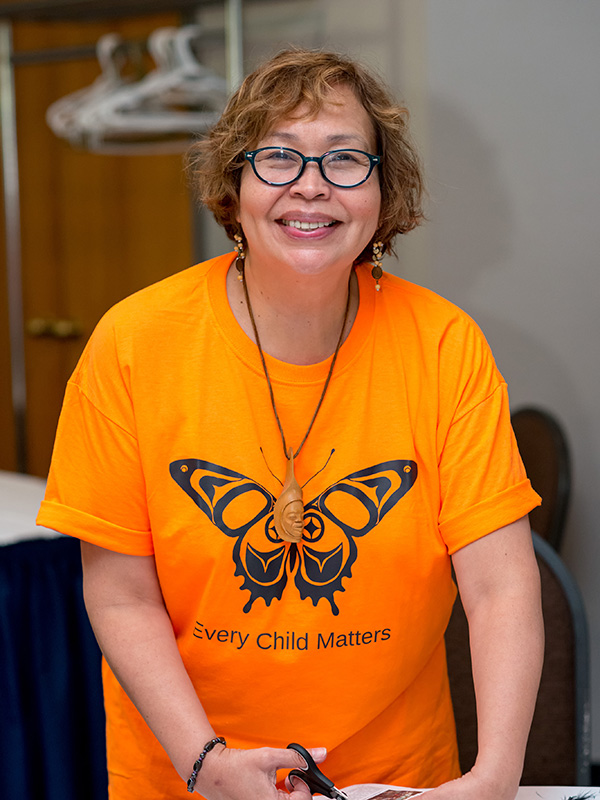
White supremacy is the institutionalization of whiteness and white privilege, and the historical, social, political and economic systems and structures that contribute to its continued dominance and subordination of non-white people.
Indigenous nations across Canada have begun to uncover thousands of unmarked graves at the sites of former residential schools. While it is reported that at least 3,200 children died while attending a residential school, many advocates estimated higher numbers, including former TRC chair Murray Sinclair who estimates that significantly more than 6,000 children never made it home.
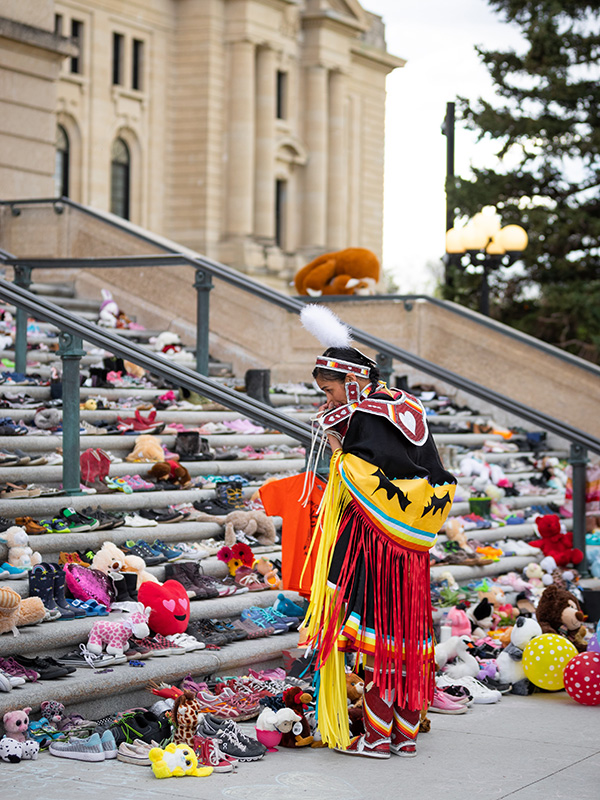
Truth and Reconciliation at Toronto Metropolitan University
- The university is working to overcome the legacy of a painful past. Within the university community, there is growing recognition of the need to demonstrate respect and understanding of the land the university sits on and to recognize the cultural knowledge and ways of knowing brought by Indigenous students, staff and faculty. On August 26, 2021, the university’s Board of Governors accepted the 22 recommendations from the Standing Strong (Mash Koh Wee Kah Pooh Win) Task Force to guide commemoration at the university and to address the legacy of Egerton Ryerson. One of the recommendations was to rename the university through a process that engaged with community members in the 2021/2022 academic year. On April 26, 2022, the university announced that it would change its name to Toronto Metropolitan University.
- Egerton Ryerson is regarded as one of the architects of the Canadian residential school system. He supported the separate education of non-Indigenous and Indigenous students with the purpose of assimilating Indigenous children into Euro-Canadian culture and converting them to Christianity. TMU proposed that the schools deliver English language instruction by religious organizations and be overseen and sponsored by the Canadian government.
- The (PDF file) Standing Strong (Mash Koh Wee Kah Pooh Win) Task Force was established by President Mohamed Lachemi in 2020 to seek an understanding of both Egerton Ryerson’s life and legacy and the role of commemoration in our community.
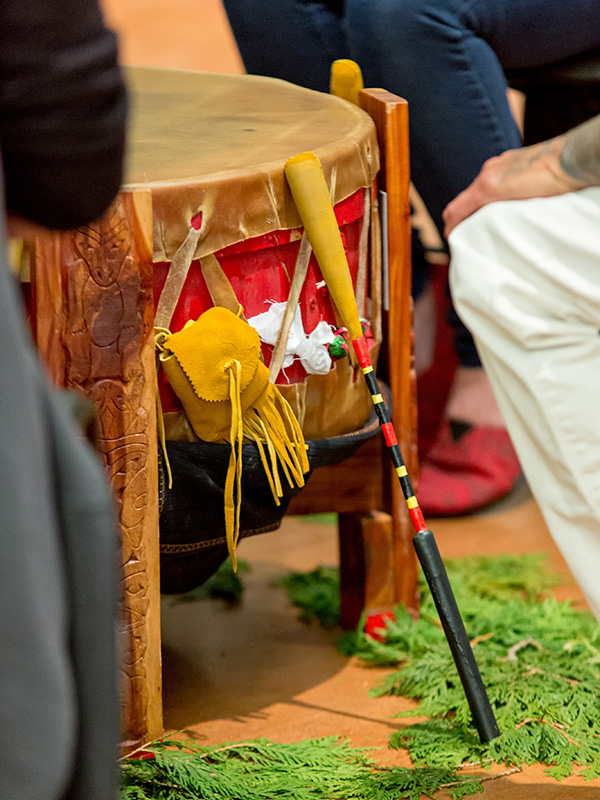
Resources at the university
- The Indigenous Education Council (AEC) serves as an advisory council, with input into, and impact on, Indigenous programming and education. The council aims to include Indigenous worldviews and values in university operations.
- Indigenous Student Services is part of the Indigenous Initiatives unit in the Office of the Vice-President, Equity and Community Inclusion (OVPECI), providing a culturally supportive environment to promote academic excellence and serving as a place to balance academic learning with traditional teachings and culture. The team provides specialized services for Indigenous students and works to develop a mutually productive relationship between the Indigenous and non-Indigenous community members.
- First Nations, Métis & Inuit Community Group is made up of faculty, instructors and staff from across the university who come together to learn and support each other.
- Supports for Indigenous students, faculty and staff
Self-educate to learn more
Reports
- Truth and Reconciliation Commission Report (external link)
- (PDF file) TMU TRC Report
- (PDF file) Standing Strong Report
- MMIW Report (external link)
Talks and seminars
- White Privilege Conference: Dr. Shirley Cheechoo’s Keynote
- Soup and Substance: The Decolonization Series (2019)
- Truth and Reconciliation Commission 2015 Report: What does it mean for TMU?
- Indigenous Education: Engaging with Indigenous Knowledges
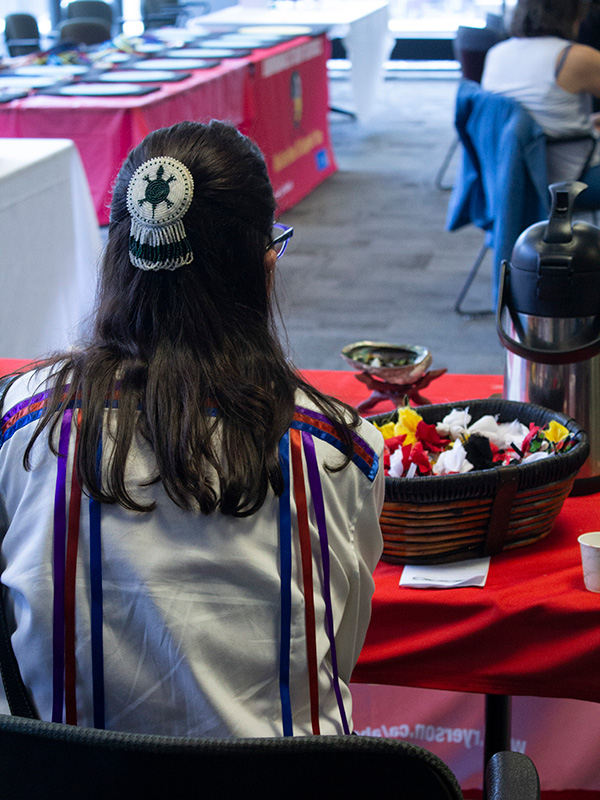
Resources
- "Why do we Acknowledge the Land?": Aboriginal knowledges at TMU
- How everyone can participate in truth and reconciliation
- On Orange Shirt Day, we recognize the ongoing legacy of residential schools
- TMU Pow Wow
Community Services
- First Nations Child and Family Caring Society (external link)
- Jordan’s Principle (external link)
- Hope For Wellness (external link)
- Education programs (external link)
References
- Canadian Heritage. (2021, September 29). National Day for Truth and Reconciliation. Canada.ca. Retrieved from https://www.canada.ca/en/canadian-heritage/campaigns/national-day-truth-reconciliation.html
- First Nations & Indigenous Studies. (n.d.). Government policy. Retrieved from https://indigenousfoundations.arts.ubc.ca/government_policy/
- Government of Canada. Crown-Indigenous Relations and Northern Affairs Canada. (2021, June 11). Truth and Reconciliation Commission of Canada. Retrieved from https://www.rcaanc-cirnac.gc.ca/eng/1450124405592/1529106060525#chp1
- Truth and Reconciliation Commission of Canada. (2015). Honouring the Truth, Reconciling for the Future. Summary of the Final Report of the Truth and Reconciliation Commission of Canada. Retrieved from https://www2.gov.bc.ca/assets/gov/british-columbians-our-governments/indigenous-people/aboriginal-peoples-documents/calls_to_action_english2.pdf
- Truth and Reconciliation Commission of Canada. (2015). Truth and Reconciliation Commission of Canada: Calls to Action (PDF). Retrieved from https://ehprnh2mwo3.exactdn.com/wp-content/uploads/2021/01/Calls_to_Action_English2.pdf